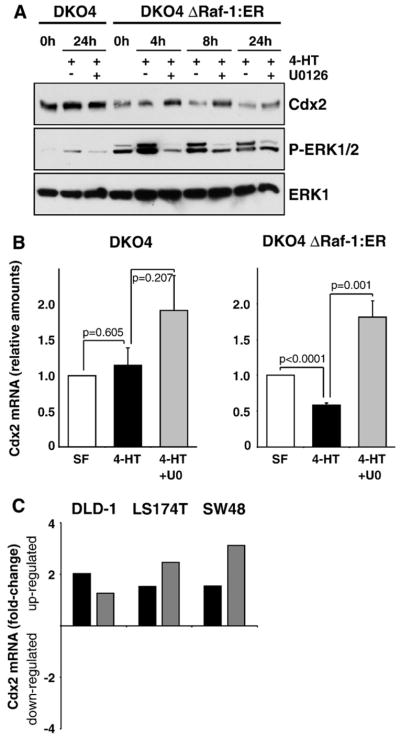Fig. 4.

Activation of the Raf–MEK–ERK1/2 pathway is sufficient to down-regulate Cdx2. (A) DKO4 or DKO4 ΔRaf-1:ER cells were treated with 4-HT with or without U0126 for the indicated times; whole-cell extracts were then fractionated by SDS-PAGE and subjected to Western blotting with antibodies to P-ERK1/2, ERK1 and Cdx2. In DKO4 ΔRaf-1:ER cells, Cdx2 levels were reduced after specific activation of the ERK1/2 pathway by 4-HT and this was blocked by treatment with U0126. Parental DKO4 cells did not respond to 4-HT. (B and C) Normalised real-time (Q)RT-PCR analyses of Cdx2 mRNA levels of four (DKO4) or nine (DKO4 ΔRaf-1:ER) independent experiments. (B) DKO4 ΔRaf-1:ER were stimulated with 4-HT with or without U0126 for 4 h (right panel); this leads to down-regulation of Cdx2 mRNA levels by more than 40% which was reversed by U0126. Parental DKO4 cells were unaffected by 4-HT treatment (left panel). (C) The CRC cell lines DLD-1, LS174T and SW48 were incubated in complete medium with or without U0126 for 6 h. Inhibiting ERK1/2 activity with U0126 consistently increased Cdx2 mRNA levels in these cell lines by up to 3-fold. Shown here is the fold-change ratio of U0126-treated over control cells of two independently performed experiments (black and dark gray bars). UO: U0126.
